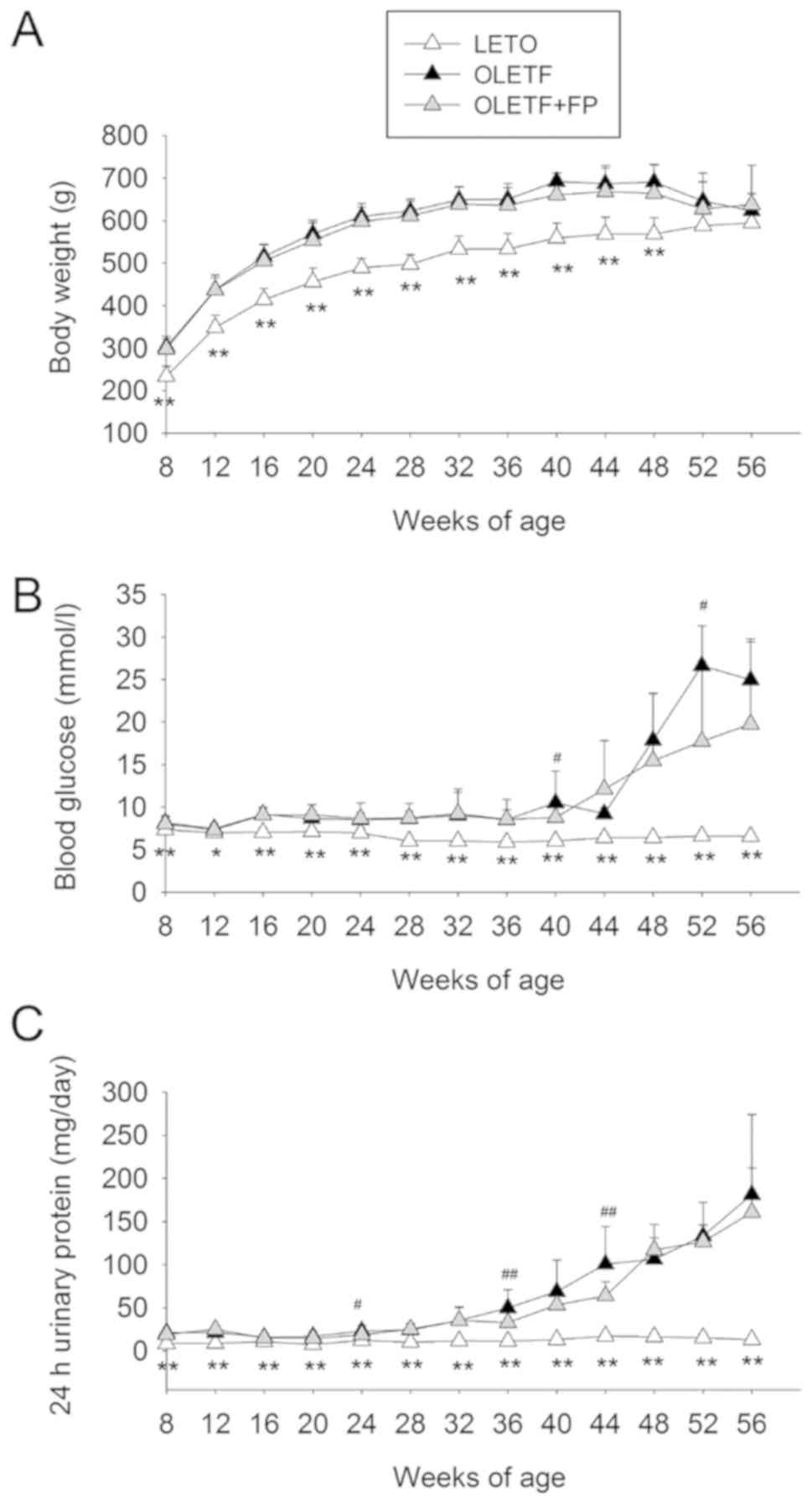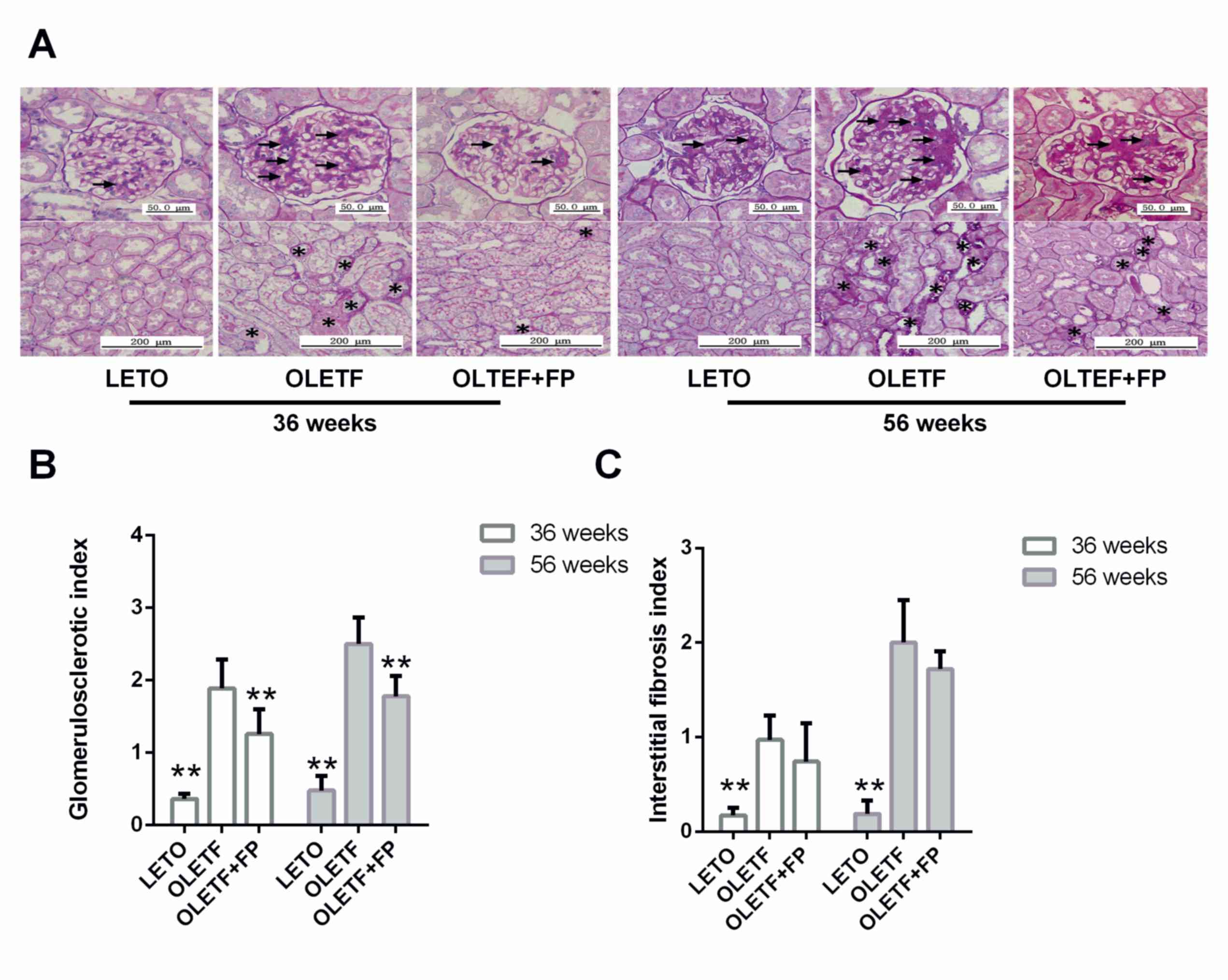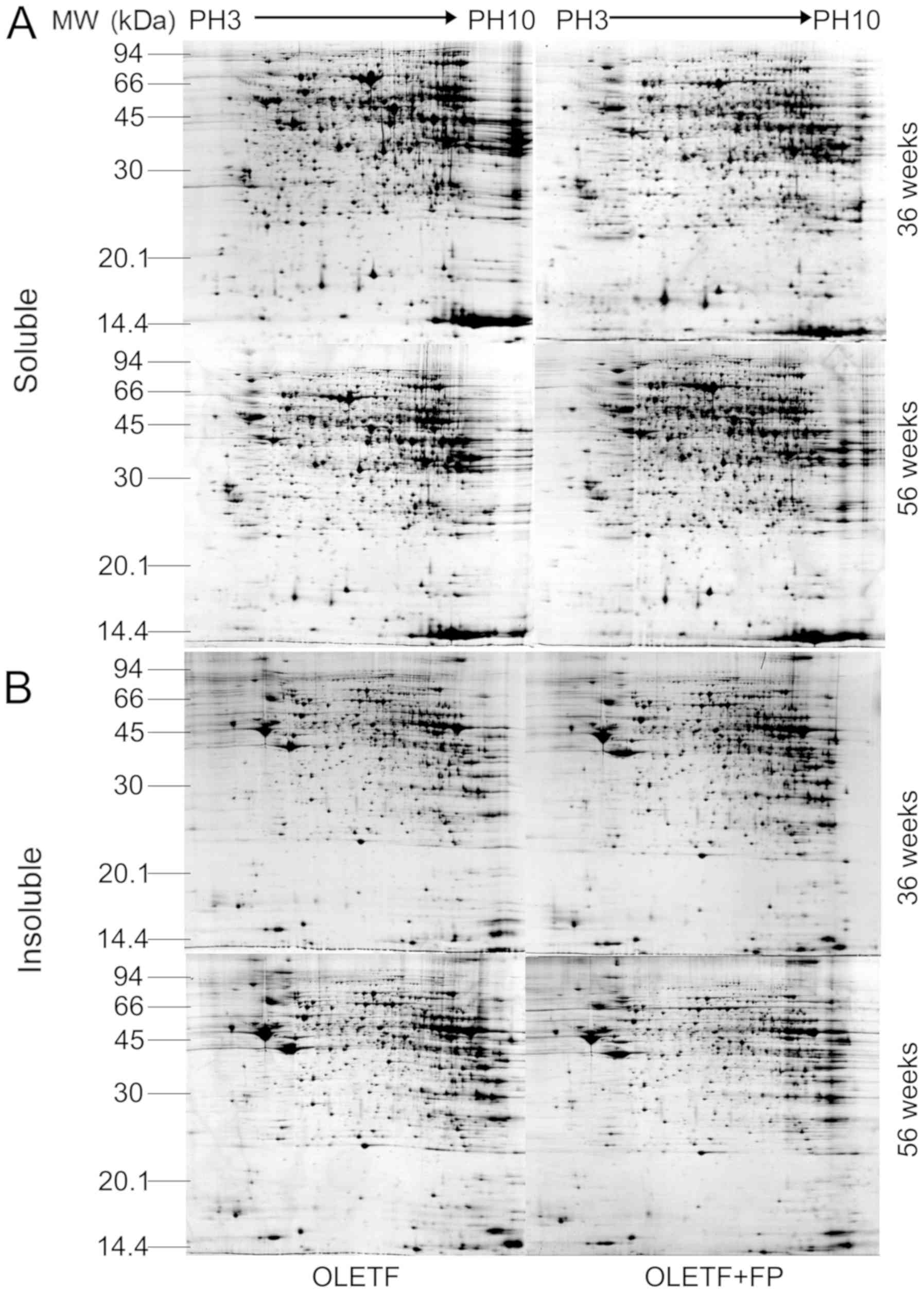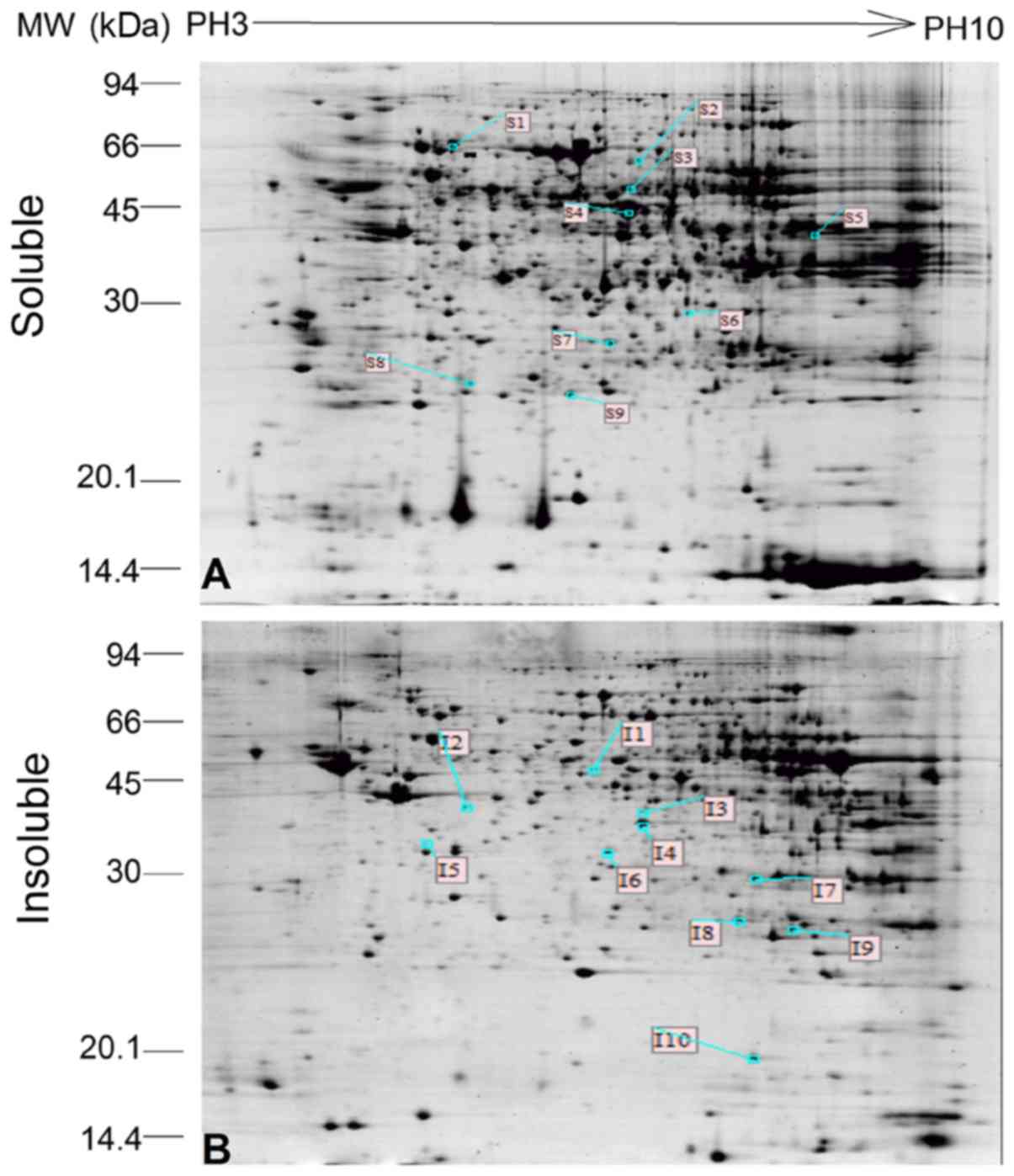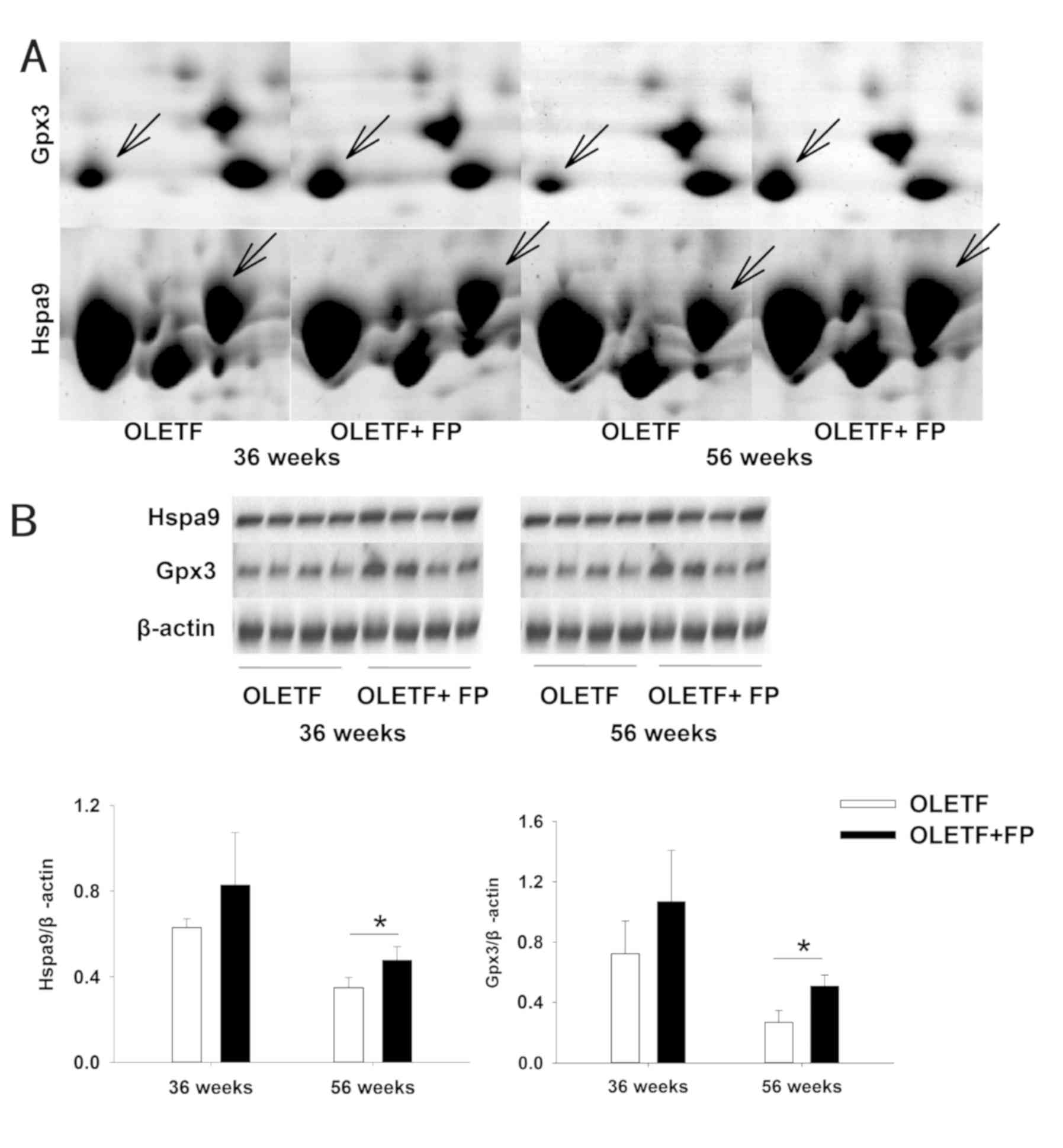|
1
|
Umanath K and Lewis JB: Update on diabetic
nephropathy: Core curriculum 2018. Am J Kidney Dis. 71:884–895.
2018. View Article : Google Scholar : PubMed/NCBI
|
|
2
|
Yerram P, Karuparthi PR, Hesemann L, Horst
J and Whaley-Connell A: Chronic kidney disease and cardiovascular
risk. J Am Soc Hypertens. 1:178–184. 2007. View Article : Google Scholar : PubMed/NCBI
|
|
3
|
Botdorf J, Chaudhary K and Whaley-Connell
A: Hypertension in cardiovascular and kidney disease. Cardiorenal
Med. 1:183–192. 2011. View Article : Google Scholar : PubMed/NCBI
|
|
4
|
Hayden MR, Sowers KM, Pulakat L,
Joginpally T, Krueger B, Whaley-Connell A and Sowers JR: Possible
mechanisms of local tissue renin-angiotensin system activation in
the cardiorenal metabolic syndrome and type 2 diabetes mellitus.
Cardiorenal Med. 1:193–210. 2011. View Article : Google Scholar : PubMed/NCBI
|
|
5
|
Liu Z, Huang XR, Chen HY, Penninger JM and
Lan HY: Loss of angiotensin-converting enzyme 2 enhances
TGF-β/Smad-mediated renal fibrosis and NF-κB-driven renal
inflammation in a mouse model of obstructive nephropathy. Lab
Invest. 92:650–661. 2012. View Article : Google Scholar : PubMed/NCBI
|
|
6
|
Nistala R, Whaley-Connell A and Sowers JR:
Redox control of renal function and hypertension. Antioxid Redox
Signal. 10:2047–2089. 2008. View Article : Google Scholar : PubMed/NCBI
|
|
7
|
Kobori H, Nangaku M, Navar LG and
Nishiyama A: The intrarenal renin-angiotensin system: From
physiology to the pathobiology of hypertension and kidney disease.
Pharmacol Rev. 59:251–287. 2007. View Article : Google Scholar : PubMed/NCBI
|
|
8
|
Karalliedde J and Viberti G: Evidence for
renoprotection by blockade of the renin-angiotensin-aldosterone
system in hypertension and diabetes. J Hum Hypertens. 20:239–253.
2006. View Article : Google Scholar : PubMed/NCBI
|
|
9
|
Kunz R, Friedrich C, Wolbers M and Mann
JF: Meta-analysis: Effect of monotherapy and combination therapy
with inhibitors of the renin angiotensin system on proteinuria in
renal disease. Ann Intern Med. 148:30–48. 2008. View Article : Google Scholar : PubMed/NCBI
|
|
10
|
Balakumar P, Arora MK, Ganti SS, Reddy J
and Singh M: Recent advances in pharmacotherapy for diabetic
nephropathy: Current perspectives and future directions. Pharmacol
Res. 60:24–32. 2009. View Article : Google Scholar : PubMed/NCBI
|
|
11
|
Magee C, Grieve DJ, Watson CJ and Brazil
DP: Diabetic nephropathy: A Tangled Web to Unweave. Cardiovasc
Drugs Ther. 31:579–592. 2017. View Article : Google Scholar : PubMed/NCBI
|
|
12
|
Brownlee M: The pathobiology of diabetic
complications: A unifying mechanism. Diabetes. 54:1615–1625. 2005.
View Article : Google Scholar : PubMed/NCBI
|
|
13
|
Kong LL, Wu H, Cui WP, Zhou WH, Luo P, Sun
J, Yuan H and Miao LN: Advances in murine models of diabetic
nephropathy. J Diabetes Res. 2013:7975482013. View Article : Google Scholar : PubMed/NCBI
|
|
14
|
Zhang H, Li P, Burczynski FJ, Gong Y, Choy
P, Sha H and Li J: Attenuation of diabetic nephropathy in Otsuka
Long-Evans Tokushima fatty (OLETF) rats with a combination of
Chinese herbs (Tangshen Formula). Evid Based Complement Alternat
Med. 2011:6137372011. View Article : Google Scholar : PubMed/NCBI
|
|
15
|
Kawano K, Hirashima T, Mori S, Saitoh Y,
Kurosumi M and Natori T: Spontaneous long-term hyperglycemic rat
with diabetic complications. Otsuka Long-Evans Tokushima Fatty
(OLETF) strain. Diabetes. 41:1422–1428. 1992. View Article : Google Scholar : PubMed/NCBI
|
|
16
|
Council NR: Guide for the care and use of
laboratory animals: Eighth editionThe National Academies Press;
Washington, DC: 2011
|
|
17
|
Forbes JM, Thallas V, Thomas MC, Founds
HW, Burns WC, Jerums G and Cooper ME: The breakdown of preexisting
advanced glycation end products is associated with reduced renal
fibrosis in experimental diabetes. FASEB J. 17:1762–1764. 2003.
View Article : Google Scholar : PubMed/NCBI
|
|
18
|
Veniant M, Heudes D, Clozel JP, Bruneval P
and Menard J: Calcium blockade versus ACE inhibition in clipped and
unclipped kidneys of 2K-1C rats. Kidney Int. 46:421–429. 1994.
View Article : Google Scholar : PubMed/NCBI
|
|
19
|
Zhang PL, Rothblum LI, Han WK, Blasick TM,
Potdar S and Bonventre JV: Kidney injury molecule-1 expression in
transplant biopsies is a sensitive measure of cell injury. Kidney
Int. 73:608–614. 2008. View Article : Google Scholar : PubMed/NCBI
|
|
20
|
Ramachandra Rao SP, Wassell R, Shaw MA and
Sharma K: Profiling of human mesangial cell subproteomes reveals a
role for calmodulin in glucose uptake. Am J Physiol Renal Physiol.
292:F1182–F1189. 2007. View Article : Google Scholar : PubMed/NCBI
|
|
21
|
Li Z, Zhang H, Dong X, Burczynski FJ, Choy
P, Yang F, Liu H, Li P and Gong Y: Proteomic profile of primary
isolated rat mesangial cells in high-glucose culture condition and
decreased expression of PSMA6 in renal cortex of diabetic rats.
Biochem Cell Biol. 88:635–648. 2010. View
Article : Google Scholar : PubMed/NCBI
|
|
22
|
Biron DG, Brun C, Lefevre T, Lebarbenchon
C, Loxdale HD, Chevenet F, Brizard JP and Thomas F: The pitfalls of
proteomics experiments without the correct use of bioinformatics
tools. Proteomics. 6:5577–5596. 2006. View Article : Google Scholar : PubMed/NCBI
|
|
23
|
Huang da W, Sherman BT and Lempicki RA:
Systematic and integrative analysis of large gene lists using DAVID
bioinformatics resources. Nat Protoc. 4:44–57. 2009. View Article : Google Scholar : PubMed/NCBI
|
|
24
|
Johnson SA and Spurney RF: Twenty years
after ACEIs and ARBs: Emerging treatment strategies for diabetic
nephropathy. Am J Physiol Renal Physiol. 309:F807–F820. 2015.
View Article : Google Scholar : PubMed/NCBI
|
|
25
|
Hsu FY, Lin FJ, Ou HT, Huang SH and Wang
CC: Renoprotective effect of angiotensin-converting enzyme
inhibitors and angiotensin II receptor blockers in diabetic
patients with proteinuria. Kidney Blood Press Res. 42:358–368.
2017. View Article : Google Scholar : PubMed/NCBI
|
|
26
|
Shani M, Vinker S and Feldman L: End-stage
renal disease and adherence to angiotensin-converting enzyme
inhibitors and angiotensin receptor blockers among patients with
diabetes. J Clin Hypertens (Greenwich). 19:627–631. 2017.
View Article : Google Scholar : PubMed/NCBI
|
|
27
|
Rossing K, Jacobsen P, Pietraszek L and
Parving HH: Renoprotective effects of adding angiotensin II
receptor blocker to maximal recommended doses of ACE inhibitor in
diabetic nephropathy: A randomized double-blind crossover trial.
Diabetes Care. 26:2268–2274. 2003. View Article : Google Scholar : PubMed/NCBI
|
|
28
|
Bakris GL and Weir MR:
Angiotensin-converting enzyme inhibitor-associated elevations in
serum creatinine: Is this a cause for concern? Arch Intern Med.
160:685–693. 2000. View Article : Google Scholar : PubMed/NCBI
|
|
29
|
van de Ven PJ, Beutler JJ, Kaatee R, Beek
FJ, Mali WP and Koomans HA: Angiotensin converting enzyme
inhibitor-induced renal dysfunction in atherosclerotic renovascular
disease. Kidney Int. 53:986–993. 1998. View Article : Google Scholar : PubMed/NCBI
|
|
30
|
Chapman AB, Gabow PA and Schrier RW:
Reversible renal failure associated with angiotensin-converting
enzyme inhibitors in polycystic kidney disease. Ann Intern Med.
115:769–773. 1991. View Article : Google Scholar : PubMed/NCBI
|
|
31
|
Singhvi SM, Duchin KL, Morrison RA,
Willard DA, Everett DW and Frantz M: Disposition of fosinopril
sodium in healthy subjects. Br J Clin Pharmacol. 25:9–15. 1988.
View Article : Google Scholar : PubMed/NCBI
|
|
32
|
Lambers Heerspink HJ and Gansevoort RT:
Albuminuria is an appropriate therapeutic target in patients with
CKD: The pro view. Clin J Am Soc Nephrol. 10:1079–1088. 2015.
View Article : Google Scholar : PubMed/NCBI
|
|
33
|
Diwakar R, Pearson AL, Colville-Nash P,
Brunskill NJ and Dockrell ME: The role played by endocytosis in
albumin-induced secretion of TGF-beta1 by proximal tubular
epithelial cells. Am J Physiol Renal Physiol. 292:F1464–F1470.
2007. View Article : Google Scholar : PubMed/NCBI
|
|
34
|
Moon JY, Tanimoto M, Gohda T, Hagiwara S,
Yamazaki T, Ohara I, Murakoshi M, Aoki T, Ishikawa Y, Lee SH, et
al: Attenuating effect of angiotensin-(1–7) on angiotensin
II-mediated NAD(P)H oxidase activation in type 2 diabetic
nephropathy of KK-A(y)/Ta mice. Am J Physiol Renal Physiol.
300:F1271–F1282. 2011. View Article : Google Scholar : PubMed/NCBI
|
|
35
|
Stephan JP, Mao W, Filvaroff E, Cai L,
Rabkin R and Pan G: Albumin stimulates the accumulation of
extracellular matrix in renal tubular epithelial cells. Am J
Nephrol. 24:14–19. 2004. View Article : Google Scholar : PubMed/NCBI
|
|
36
|
Wolf G, Schroeder R, Ziyadeh FN and Stahl
RA: Albumin up-regulates the type II transforming growth
factor-beta receptor in cultured proximal tubular cells. Kidney
Int. 66:1849–1858. 2004. View Article : Google Scholar : PubMed/NCBI
|
|
37
|
Burton C and Harris KP: The role of
proteinuria in the progression of chronic renal failure. Am J
Kidney Dis. 27:765–775. 1996. View Article : Google Scholar : PubMed/NCBI
|
|
38
|
Behne D and Kyriakopoulos A: Mammalian
selenium-containing proteins. Annu Rev Nutr. 21:453–473. 2001.
View Article : Google Scholar : PubMed/NCBI
|
|
39
|
Haung W, Koralewska-Makar A, Bauer B and
Akesson B: Extracellular glutathione peroxidase and ascorbic acid
in aqueous humor and serum of patients operated on for cataract.
Clin Chim Acta. 261:117–130. 1997. View Article : Google Scholar : PubMed/NCBI
|
|
40
|
Whitin JC, Bhamre S, Tham DM and Cohen HJ:
Extracellular glutathione peroxidase is secreted basolaterally by
human renal proximal tubule cells. Am J Physiol Renal Physiol.
283:F20–F28. 2002. View Article : Google Scholar : PubMed/NCBI
|
|
41
|
Kang SW, Natarajan R, Shahed A, Nast CC,
LaPage J, Mundel P, Kashtan C and Adler SG: Role of 12-lipoxygenase
in the stimulation of p38 mitogen-activated protein kinase and
collagen alpha5(IV) in experimental diabetic nephropathy and in
glucose-stimulated podocytes. J Am Soc Nephrol. 14:3178–3187. 2003.
View Article : Google Scholar : PubMed/NCBI
|
|
42
|
de Cavanagh EM, Inserra F, Toblli J,
Stella I, Fraga CG and Ferder L: Enalapril attenuates oxidative
stress in diabetic rats. Hypertension. 38:1130–1136. 2001.
View Article : Google Scholar : PubMed/NCBI
|
|
43
|
Ogawa S, Mori T, Nako K, Kato T, Takeuchi
K and Ito S: Angiotensin II type 1 receptor blockers reduce urinary
oxidative stress markers in hypertensive diabetic nephropathy.
Hypertension. 47:699–705. 2006. View Article : Google Scholar : PubMed/NCBI
|
|
44
|
Sonta T, Inoguchi T, Matsumoto S, Yasukawa
K, Inuo M, Tsubouchi H, Sonoda N, Kobayashi K, Utsumi H and Nawata
H: In vivo imaging of oxidative stress in the kidney of diabetic
mice and its normalization by angiotensin II type 1 receptor
blocker. Biochem Biophys Res Commun. 330:415–422. 2005. View Article : Google Scholar : PubMed/NCBI
|
|
45
|
Ishizawa K, Izawa-Ishizawa Y, Dorjsuren N,
Miki E, Kihira Y, Ikeda Y, Hamano S, Kawazoe K, Minakuchi K, Tomita
S, et al: Angiotensin II receptor blocker attenuates PDGF-induced
mesangial cell migration in a receptor-independent manner. Nephrol
Dial Transplant. 25:364–372. 2010. View Article : Google Scholar : PubMed/NCBI
|
|
46
|
Lv J, Jia R, Yang D, Zhu J and Ding G:
Candesartan attenuates Angiotensin II-induced mesangial cell
apoptosis via TLR4/MyD88 pathway. Biochem Biophys Res Commun.
380:81–86. 2009. View Article : Google Scholar : PubMed/NCBI
|
|
47
|
Park SJ, Lee BH and Kim DJ: Identification
of proteins that interact with podocin using the yeast 2-hybrid
system. Yonsei Med J. 50:273–279. 2009. View Article : Google Scholar : PubMed/NCBI
|
|
48
|
Morito N, Yoh K, Ojima M, Okamura M,
Nakamura M, Hamada M, Shimohata H, Moriguchi T, Yamagata K and
Takahashi S: Overexpression of Mafb in podocytes protects against
diabetic nephropathy. J Am Soc Nephrol. 25:2546–2557. 2014.
View Article : Google Scholar : PubMed/NCBI
|
|
49
|
Chiu YW, Kuo MC, Kuo HT, Chang JM, Guh JY,
Lai YH and Chen HC: Alterations of glomerular and extracellular
levels of glutathione peroxidase in patients and experimental rats
with diabetic nephropathy. J Lab Clin Med. 145:181–186. 2005.
View Article : Google Scholar : PubMed/NCBI
|
|
50
|
Fan QL, Yang G, Liu XD, Ma JF, Feng JM,
Jiang Y and Wang LN: Effect of losartan on the glomerular protein
expression profile of type 2 diabetic KKAy mice. J Nephrol.
26:517–526. 2013. View Article : Google Scholar : PubMed/NCBI
|
|
51
|
Kaul SC, Deocaris CC and Wadhwa R: Three
faces of mortalin: A housekeeper, guardian and killer. Exp
Gerontol. 42:263–274. 2007. View Article : Google Scholar : PubMed/NCBI
|
|
52
|
Wadhwa R, Ryu J, Ahn HM, Saxena N,
Chaudhary A, Yun CO and Kaul SC: Functional significance of point
mutations in stress chaperone mortalin and their relevance to
Parkinson disease. J Biol Chem. 290:8447–8456. 2015. View Article : Google Scholar : PubMed/NCBI
|
|
53
|
Deocaris CC, Widodo N, Shrestha BG, Kaur
K, Ohtaka M, Yamasaki K, Kaul SC and Wadhwa R: Mortalin sensitizes
human cancer cells to MKT-077-induced senescence. Cancer Lett.
252:259–269. 2007. View Article : Google Scholar : PubMed/NCBI
|
|
54
|
Liu Y, Liu W, Song XD and Zuo J: Effect of
GRP75/mthsp70/PBP74/mortalin overexpression on intracellular ATP
level, mitochondrial membrane potential and ROS accumulation
following glucose deprivation in PC12 cells. Mol Cell Biochem.
268:45–51. 2005. View Article : Google Scholar : PubMed/NCBI
|
|
55
|
Matsuoka T, Wada J, Hashimoto I, Zhang Y,
Eguchi J, Ogawa N, Shikata K, Kanwar YS and Makino H: Gene delivery
of Tim44 reduces mitochondrial superoxide production and
ameliorates neointimal proliferation of injured carotid artery in
diabetic rats. Diabetes. 54:2882–2890. 2005. View Article : Google Scholar : PubMed/NCBI
|
|
56
|
Lv Y, Li Y, Zhang D, Zhang A, Guo W and
Zhu S: HMGB1-induced asthmatic airway inflammation through
GRP75-mediated enhancement of ER-mitochondrial Ca2+
transfer and ROS increased. J Cell Biochem. 119:4205–4215. 2018.
View Article : Google Scholar : PubMed/NCBI
|
|
57
|
Honrath B, Metz I, Bendridi N, Rieusset J,
Culmsee C and Dolga AM: Glucose-regulated protein 75 determines
ER-mitochondrial coupling and sensitivity to oxidative stress in
neuronal cells. Cell Death Discov. 3:170762017. View Article : Google Scholar : PubMed/NCBI
|
|
58
|
Oksala NK, Lappalainen J, Laaksonen DE,
Khanna S, Kaarniranta K, Sen CK and Atalay M: Alpha-lipoic Acid
modulates heat shock factor-1 expression in streptozotocin-induced
diabetic rat kidney. Antioxid Redox Signal. 9:497–506. 2007.
View Article : Google Scholar : PubMed/NCBI
|
|
59
|
Tsuneki M, Maruyama S, Yamazaki M, Xu B,
Essa A, Abé T, Babkair H, Cheng J, Yamamoto T and Saku T:
Extracellular heat shock protein A9 is a novel interaction partner
of podoplanin in oral squamous cell carcinoma cells. Biochem
Biophys Res Commun. 434:124–130. 2013. View Article : Google Scholar : PubMed/NCBI
|
|
60
|
Hamdi HK and Castellon R: ACE inhibition
actively promotes cell survival by altering gene expression.
Biochem Biophys Res Commun. 310:1227–1235. 2003. View Article : Google Scholar : PubMed/NCBI
|















